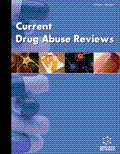Abstract
Adolescents are at heightened risk for the development of both depressive and substance-related disorders. These two disorders frequently co-occur in adolescents and are associated with significant morbidity and mortality. Given the substantial economic and psychosocial burden associated with the comorbid condition, the identification of causal mechanisms associated with their co-occurrence is of great public health importance. Although there is significant understanding of the environmental and neurobiological factors involved in depression and addictive disorders considered separately, the mechanisms underlying the comorbid illness have not been investigated carefully. The purpose of this review is to summarize the extant literature on genetic, environmental and neurobiological processes involved in the etiology of depressive and substance-related disorders in adolescents and adults. It is important to note that the data on common neurobiological systems that link addictive and depressive disorders are primarily from research with adult animals and humans. Given the ongoing maturation of these systems throughout adolescence and early adult life, it is not clear how these neurobiological processes influence the development and progression of both disorders. A better understanding of the pathophysiological mechanisms leading to the onset and course of these disorders during adolescence will be helpful in developing more effective preventive and treatment strategies not only for this population but also for adult patients with early-onset illness.
Keywords: Adolescence, addictive disorder, depression, development, motivation system, neurobiology
 39
39















